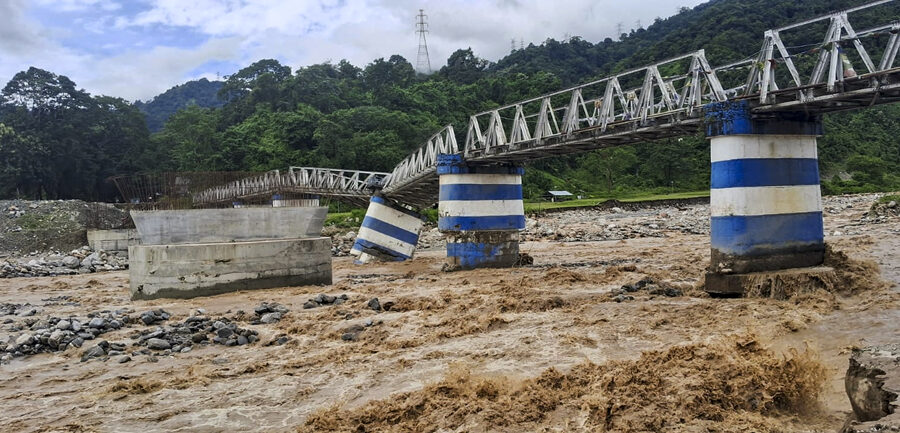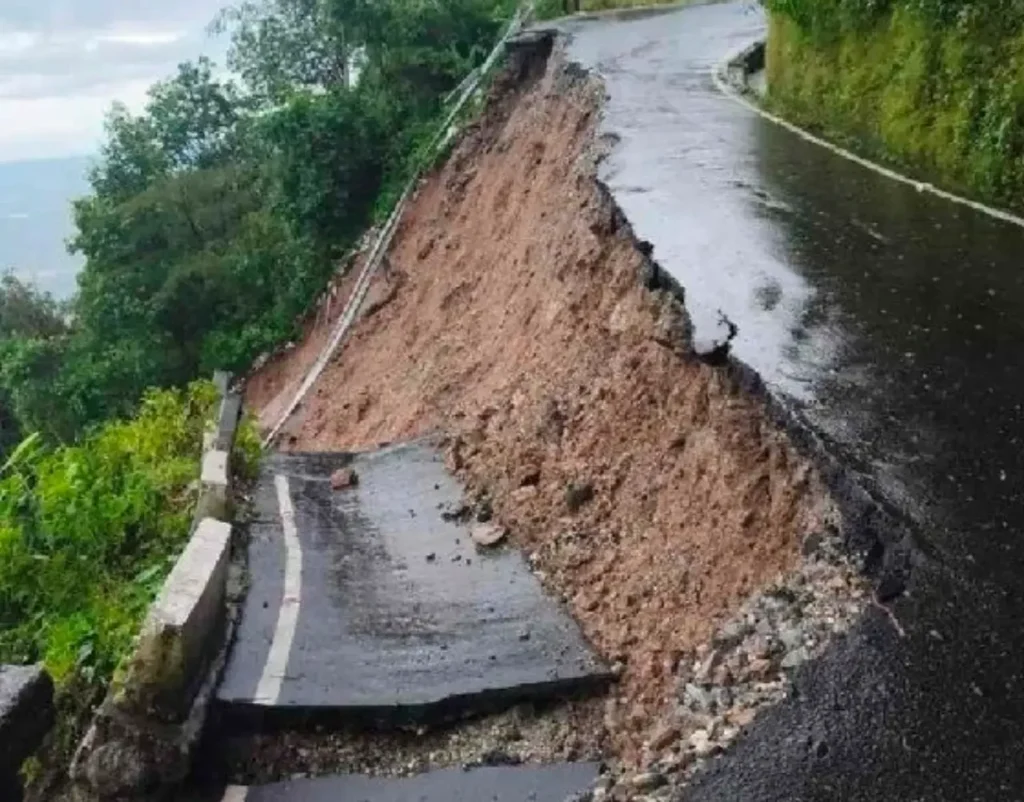The hills have been speaking for a long time. Last week, their voices came down as thunder, lightning, and rain that refused to stop for over eight hours. Those who remember the 1968 disaster in Darjeeling hills say this was different; heavier, more relentless. The rain did not fall in isolation. It carried the weight of warmer oceans, slower-moving clouds, and air saturated with moisture, a warning of a climate that has begun to overwhelm us.
But this is not only about the weather. The slopes are fragile, and we have helped break them. Roads widened without thought, rivers forced into unnatural courses, forests cleared for hotels and homestays. Every landslide in Mirik, every blocked jhora in Kalimpong, every slope that let go under concrete and garbage is a signal: the hills are beyond their limits.
Tourism, the backbone of the local economy, has become part of the problem. Multistoried buildings press down on unstable slopes. Waste blocks drainage. Septic leaks seep into the soil, weakening it further. Ambition, convenience, and short-term profit now weigh more than the mountains can bear.
NH 10, the highway linking the plains to Sikkim and Kalimpong, shows the consequences. India’s vital lifeline, is now in danger of being snapped. The 2023 Teesta floods tore through the bridges, deposited sediments and destroyed lives. Even light rain can trigger closures. The road has become an exercise in futility; it can no longer be maintained without overwhelming cost and risk.
The hills demand humility. Retaining walls and rock bolts are temporary gestures. What is needed are alternatives that respect the terrain; routes that avoid riverbanks, that rest on stable foundations, that follow the logic of the mountain, not politics. Environmental assessments must integrate glacial flood and seismic risk, landslide susceptibility zoning must be enforced, and inter-state coordination for the Teesta basin is no longer negotiable.

What we call disasters are the hills’ way of restoring balance. Each flood, each collapse, is a reminder of the cost of forgetting the landscape’s limits. Unless we listen, the roads, the towns, the lifelines we rely on will continue to fracture beneath us.
The future of the Darjeeling–Kalimpong hills will depend not on how much we build, but on how wisely we endure. True progress means moving with the mountain’s rhythm, not against it, trading haste for patience, and short-term gain for long-term survival. Only then can the fragile lifeline hold.







